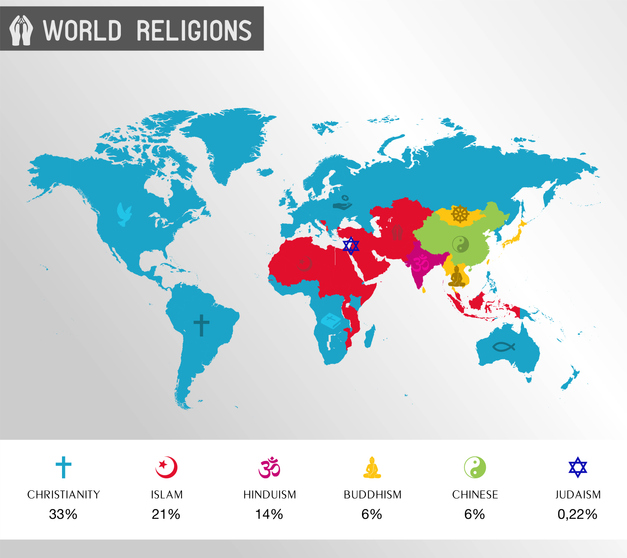1. Understanding the Muslim’s World
Dramatic events seem to bubble forth on a daily basis from the Islamic world. It seems like we can’t go a day without facing questions about the thoughts and actions of Muslims. Who are they? What do they believe? How can they ever be reached with the gospel?
Most of the world’s 1.6 billion Muslims live in nations that restrict communication of the message of Jesus. Thus, Muslims are one of the largest unreached or under-reached people groups on the earth. God, in His wisdom and grace, is bringing increasing numbers to study at American universities. Currently, more than 150,000 international Muslim students are present on our campuses.
Here in America, they can engage in three spiritual experiences that might elude them in their home countries–talk with a true follower of Jesus, encounter true Christian love and discover the truth of the Bible. But now that these Muslim students are within reach of the truth, will we help facilitate such experiences for them? Will we reach out to them with the love of Jesus?
The Beginnings of Islam
Muhammad, the prophet of Islam, was born in Mecca (in the land that is now Saudi Arabia) in 570 A.D. He was greatly disturbed by the idol worship of his culture and often retreated into the desert to meditate on the proper way to worship the true God. When he was 40 years old, it is said that the angel Gabriel appeared to him with his first revelation from God. These revelations continued, and they were later gathered together into the Quran.
Muhammad was eventually run out of Mecca by the keepers of the idols in an event that marks the beginning of the Muslim calendar (A.D. 622). He fled to Medina where he attracted enough followers to make it possible for him to return to Mecca in A.D. 630. After Muhammad’s death, Islam continued to expand under various leaders – through conquest and through trade contacts.
Islam in the World Today
Where do Muslims Live? The vast majority of Muslims live in the area of the world that has been identified as the “10/40 Window”— that area between 10 and 40 degree north latitude on the globe. The country with the largest number of Muslims is Indonesia, followed by Pakistan, India, Bangladesh and Iran. Though we tend to think of Muslims as Middle Easterners and speakers of Arabic, that particular group comprises less than 25% of the world’s Muslims.
Types of Islam There are as many as 150 different branches of Islam, but they can generally be grouped under two main types – Sunni and Shia – with one special branch, Sufi.The Sunni–Shia split occurred in A.D. 680. A primary difference between these two branches is their understanding of the qualifications of the leader for the universal Islamic community.
- Sunni – About 85% of all Muslims are Sunni. In addition to following the Quran, Sunnis try to follow the sayings and actions of Muhammad that were collected after his death in the books of the Hadith. The Hadith show more clearly how to practice the teachings of the Quran. Sunnis believe that the leader for Islam (called a caliph) can be anyone selected by the consensus of the community. There has been no universally recognized caliph since the Ottoman Empire fell and the caliphate was disbanded in 1924.
- Shia (or “Shiite”) – About 14% of all Muslims are Shia, and they are found mainly in Iran and Iraq. Shiites believe that Allah provides for the continuing guidance of the community through the Imam, who must be a direct descendant of Muhammad. The majority of Shia believe there were 12 Imams (Ali was the first) and that the twelfth went into hiding where he waits to return one day as the Mehdi (“Messiah”). There is no Imam present today, though in places like Iran the Ayatollah (“a word from Allah”) takes the place of the absent Imam. Shiites follow a non-literal interpretation of the Quran and their own collections of Hadith.
- Sufi – This is not really a separate branch of Islam but a mystical belief system that cuts across both Sunni and Shia branches. Sufis adhere to an allegorical reading of the Quran. They believe that the soul can rise to the very presence of God and eventually be united with God through prayer and discipline. They often follow a “holy man” who gives spiritual guidance in the search for union with God through self-discipline, mystical intuition, and sometimes music and dancing
